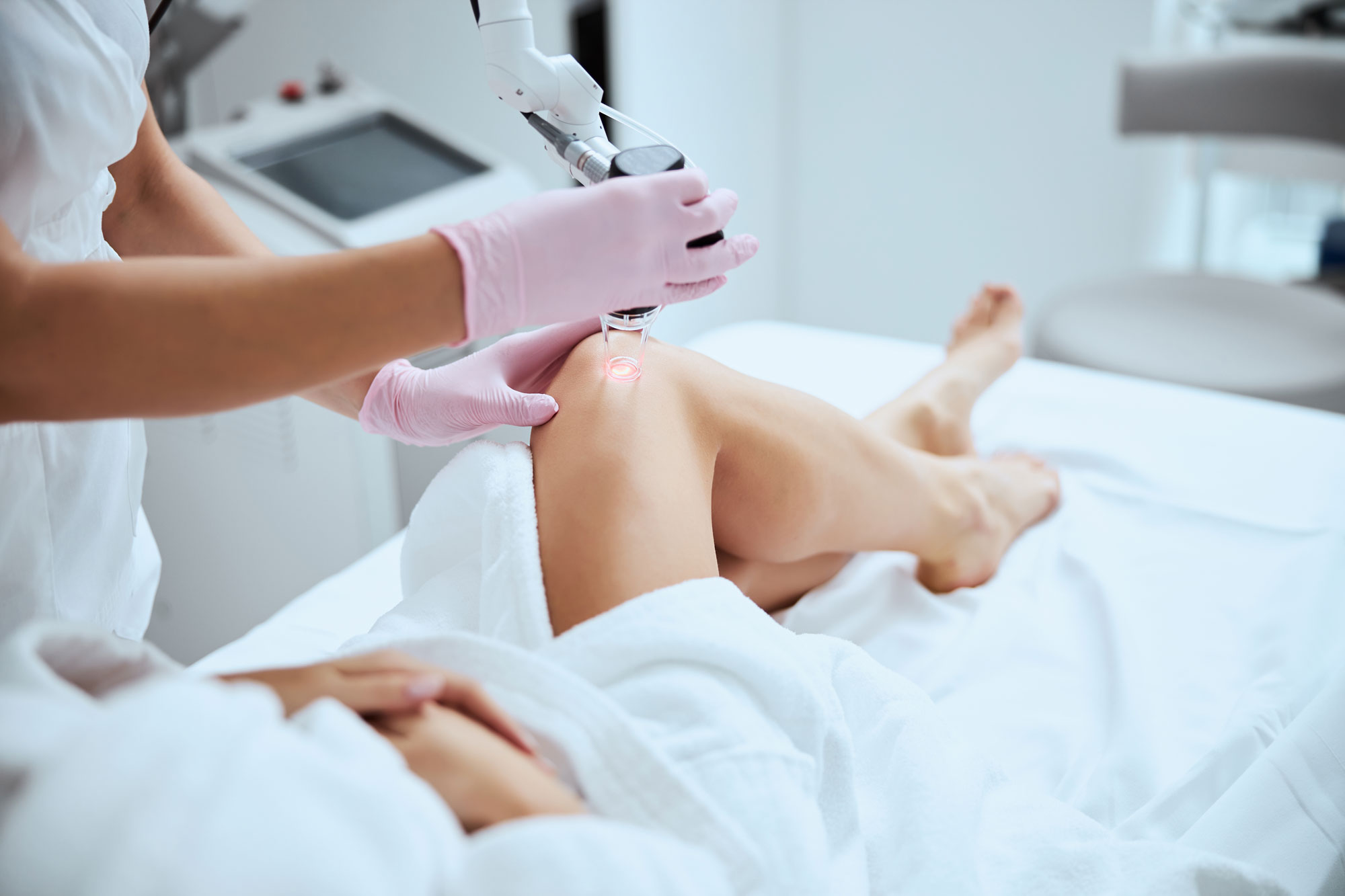Conditions We Treat
Take Your Next Step to a life FREE from Vein Disease Schedule Appointment
How We Do Vein Treatment
It’s estimated that nearly 200 million people worldwide have vein disease or chronic venous insufficiency.

The VenaSeal procedure at The Vein Treatment Clinic of Tulsa is a comfortable procedure that works.
More than 100,000 patients have been treated with the VenaSeal closure system. This simple outpatient procedure has less discomfort than thermal ablation, faster recovery time, and no need for compression stockings afterwards. The Vein Treatment Clinic of Tulsa aims to provide relief for those with varicose veins and its our goal to counteract this common health issue with comfort, efficiency, and care.
How Fast Will it Work?
Real Fast! The advantage of the VenaSeal procedure is that it works quickly. Symptoms improve immediately when the diseased vein has been closed.
The VenaSeal procedure at the Vein Clinic of Tulsa is designed to reduce recovery time. Many patients return to normal activity immediately after the procedure. Your doctor can help you determine when you can return to normal activity.

Advanced Treatment Options for Vein Disease and Venous Insufficiency
At the Vein Treatment Clinic of Tulsa, we’re specialized in the most advanced vein procedures, including VenaSeal–a revolutionary treatment option for treating varicose veins in suitable patients.
The VenaSeal closure procedure involves using an advanced medical adhesive delivered directly into the affected vein with ultrasound guidance. This adhesive seals off the blood supply to the affected area and re-routes it to healthy veins. VenaSeal takes around 45-60 minutes and can be completed as a day treatment.
The VenaSeal procedure has shown faster improvement in patient symptoms, lower pain rates, and minimal bruising and complications. In addition, the VenaSeal closure has proven more effective as a treatment option over conventional varicose vein treatments.
1. Before the Procedure
Before the VenaSeal procedure, you will have an ultrasound around the area of your varicose veins because varicose veins are not always visible on the skin’s surface. The ultrasound will act as a road map for our vein specialists so that they will know which veins to treat.
2. The Procedure
Once the map of your veins has been created, a local anesthetic will be administered to ensure you feel no discomfort. Your vein specialist will then use a needle to insert a thin plastic tube called a catheter into the varicose vein. The catheter is guided through the vein using ultrasound imaging. As it travels through the vein, it releases medical adhesive, which helps to close off the vein and redirect blood flow to healthy veins.
3. After the Procedure
Eventually, the body will naturally reabsorb the veins that have been treated, which causes them to disappear. Most patients can expect to see an improvement in the appearance of their legs within just four weeks of the procedure.
At the Vein Treatment Clinic of Tulsa, you can finally be free of varicose veins and enjoy life without discomfort.
Frequently Asked Questions
To learn more about vein treatments and the various symptoms, click through our FAQ below!
What are symptoms of vein disease?
- Aching Legs
- Heaviness In The Legs
- Enlarged, Swollen, Knotted Clusters Of Purple Veins
- Edema (Swelling In The Legs)
- Itching Skin Above The Affected Veins
- Skin Discoloration
- Ulcers On The Inner Aspect Of The Ankles (In Advanced Cases)
- Enlarged, Swollen, Knotted Clusters Of Purple Veins
- Generalized Swelling, Warmth And Redness In The Affected Limb
- Distention Of Superficial Veins
- Bluish Skin Color In The Limb Or Toes (Cyanosis)
What are The Causes of Varicose Veins?
- Risk factors include family history, lack of exercise, smoking, prolonged sitting or standing and more.
- Venous reflux is a condition that can lead to valves not closing, allowing blood to drain and pool. If left untreated, venous reflux can develop into chronic venous insufficiency (CVI).
- Healthy leg veins have valves that keep blood flowing to the heart. Venous reflux disease develops when the valves stop working properly and allow blood to flow backward (I.e., reflux) and pool in the lower leg veins. If venous reflux disease is left untreated, symptoms can worsen over time.
How Does The Vein Treatment Clinic of Tulsa Treat Diseased Veins with VenaSeal?
The goal of our treatment is to reduce or stop the backward flow of blood. At The Vein Treatment Clinic of Tulsa, our powerful Venaseal treatment will close off the diseased vein by delivering medical adhesive that permanently seals the vein, routing blood flow through healthier veins.
The system delivers a small amount of a specially formulated medical adhesive to the diseased vein. The adhesive permanently seals the vein and blood is rerouted through nearby healthy veins. Our safe and effective treatment, will provide a drastic improvement in your quality of life.
When will my symptoms improve?
Symptoms are caused by the diseased superficial vein. Thus, symptoms may improve as soon as the diseased vein is closed.
How fast can I return to normal activity after the procedure?
The VenaSeal procedure is designed to reduce recovery time. Many patients return to normal activity immediately after the procedure. Your doctor can help you determine when you can return to normal activity.
Is the VenaSeal procedure painful?
Most patients feel little, if any, pain during outpatient procedure.
Is there bruising after the procedure?
Most patients report little-to-no-bruising after VenaSeal procedure.
What happens to the VenaSeal adhesive?
Only a very small amount of VenaSeal adhesive is used to close the vein. Your body will naturally create scar tissue around the adhesive over time to keep the vessel permanently closed.
How does the VenaSeal procedure differ from thermal energy procedures?
The VenaSeal procedure uses an adhesive to close the superficial vein. Thermal energy procedures use heat to close the vein. The intense heat requires a large volume of numbing medicine, which is injected through many needle sticks. The injections may cause pain and bruising after the procedure.


